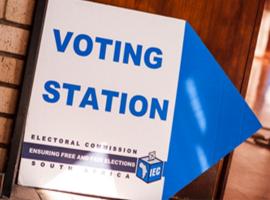
With the clock inching closer to Voting Day when citizens will mark their X next to the name of their preferred candidate in the 2024 general elections, it is important that we all go into the various voting booths across the country armed with all the relevant information to make an informed choice, writes Neo Semono.
The 2024 National and Provincial Elections coincide with the 30 years of freedom and democracy celebrations that the country is observing this year.
Young and old registered voters will make their mark in South Africa’s seventh democratic elections on 29 May after which the seventh administration will come into being.
While we are accustomed to receiving two ballots in national and provincial elections, things will be a little different this Voting Day.
Instead of the usual two - registered voters will this time around receive three ballot papers - wherein to mark their X.
The three ballots are the result of the passing of the Electoral Amendment Act of 2023.
The Electoral Amendment Act of 2023 which President Cyril Ramaphosa signed into law on 17 April 2023, gives effect to the Constitutional Court judgment handed down in June 2020.
The judgement declared the Electoral Act of 1998 unconstitutional for stipulating that election to the National Assembly and provincial legislatures may only be attained through membership of political parties.
The court gave Parliament two years to remedy the defects. Since the court decision, the Electoral Bill was born and extensive public consultations on the bill were held by Parliament’s National Assembly and the National Council of Provinces.
This prompted Parliament to request two deadline extensions from the court with the final deadline for Parliament to pass the bill having been set at 28 February 2023.
And while there were hiccups, the Act finally became law in June 2023.
Less than a year later since becoming law, South Africans will be voting in elections that include independent candidates.
Come Wednesday, 29 May, voters will receive three ballots - the first being for the election of the compensatory 200 members of the National Assembly, which is only contested by political parties on a closed list basis.
According to the Electoral Commission (IEC), the second ballot will be for the regional elections of the 200 members of the National Assembly. This ballot will vary from region to region, depending on which parties and independent candidates contest the relevant regional election. Only the names of political parties and independent candidates that have met the requirements to contest each regional election will appear on this ballot.
According to the commission, in the national elections, independent candidates will contest the 200 regional seats alongside political parties, while the other 200 seats will be compensatory to bring back general proportionality for political parties.
This means that the total votes for a party in a region determine the number of seats they hold.
The third ballot which is the provincial ballot, will be for electing the members of the provincial legislature in each of the nine provinces. It contains the names of the political parties and independent candidates that have met the requirements to contest each provincial election.
However, while independent candidates can contest in multiple regions, they are limited to winning just one seat in the National Assembly.
The participation of independent candidates in the country’s elections for the very first time, is a feather in South Africa’s cap. It’s a reflection of a democracy in action.
And while the country is not without its faults, including corruption and the continued impact of the state capture years among a list of things that need attention, our democracy is a robust one and very much alive with individuals and organisations able to approach the courts for relief.
The judgment in the matter of the New Nation Movement NPC & others V President of the Republic of South Africa & others where the Electoral Act of 1998 was declared unconstitutional for stipulating that election to the National Assembly and provincial legislatures may only be attained through membership of political parties, is one such example.
The year of the three ballots at the polls is also the year wherein the South African voters’ roll which was first compiled ahead of the 1999 national and provincial elections, has swollen to 27.79 million registered voters.
In 1999, the voters’ roll stood at 18.17 million registered voters.
While it is not a perfectly hung portrait, the South African canvass is continually being improved upon with the flair and outspokenness that we’re known for.
Let us go out and exercise our right to vote. The South African Inc picture is far from being complete, it needs you and I. -SAnews.gov.za
Neo Semono is a Features Editor at SAnews.


